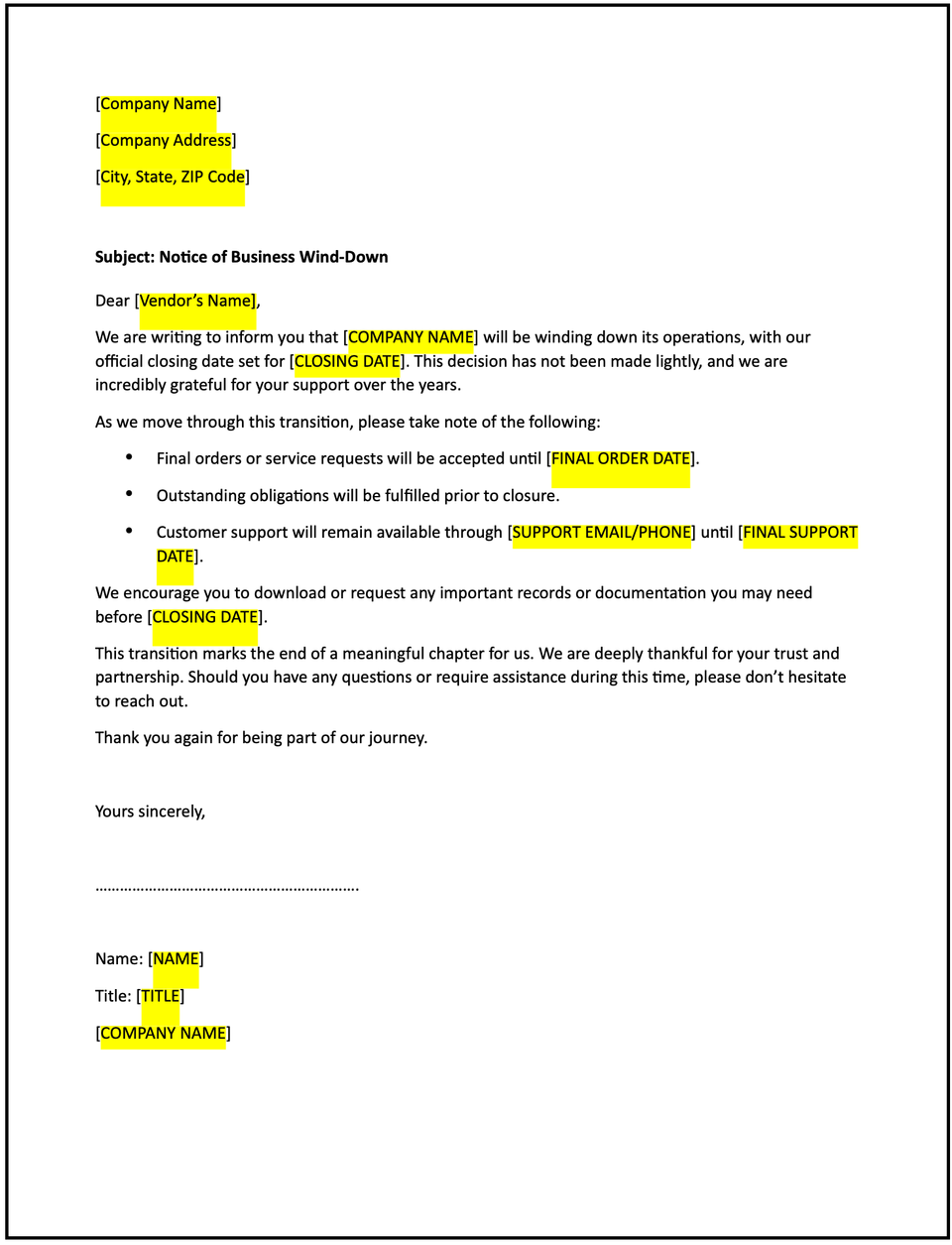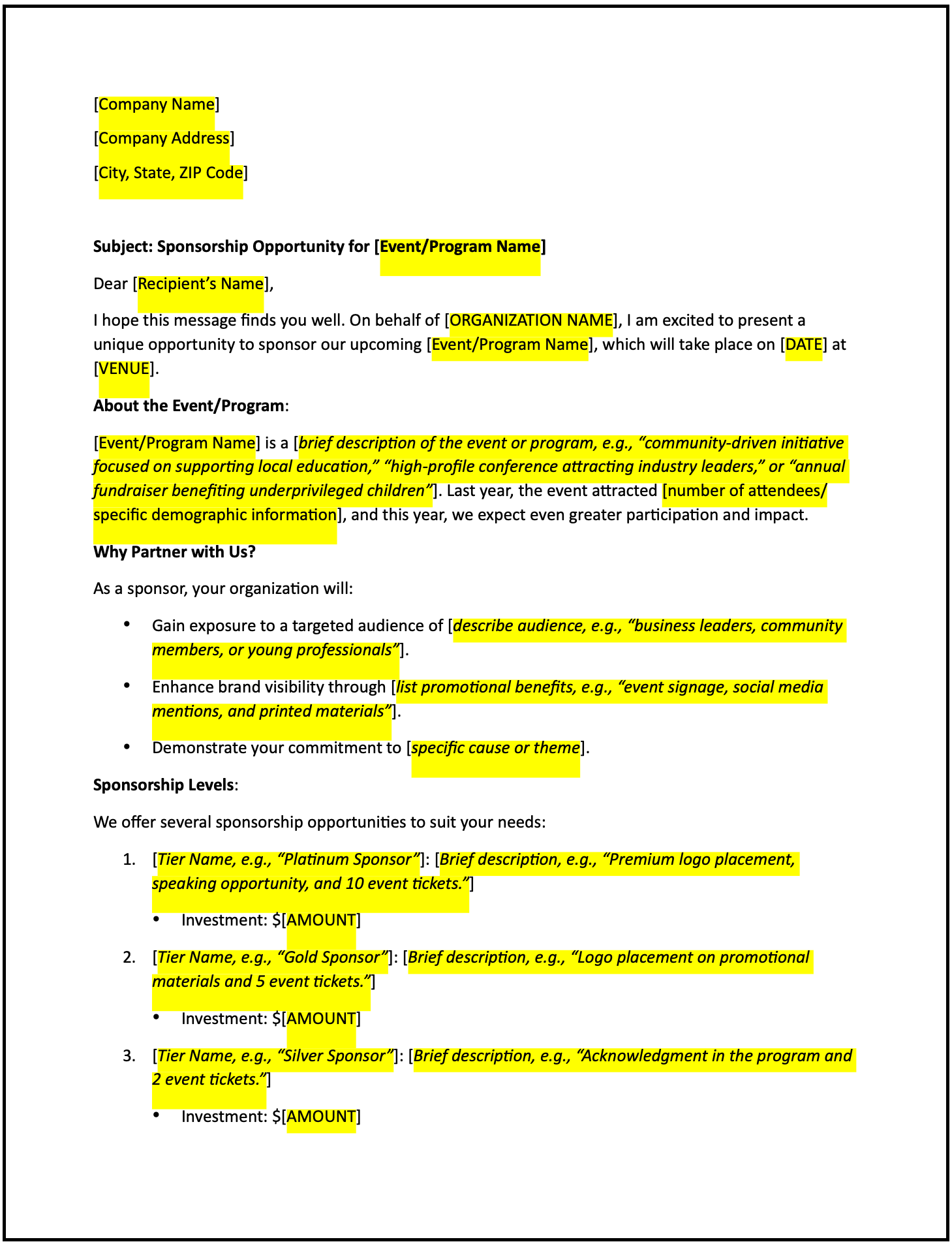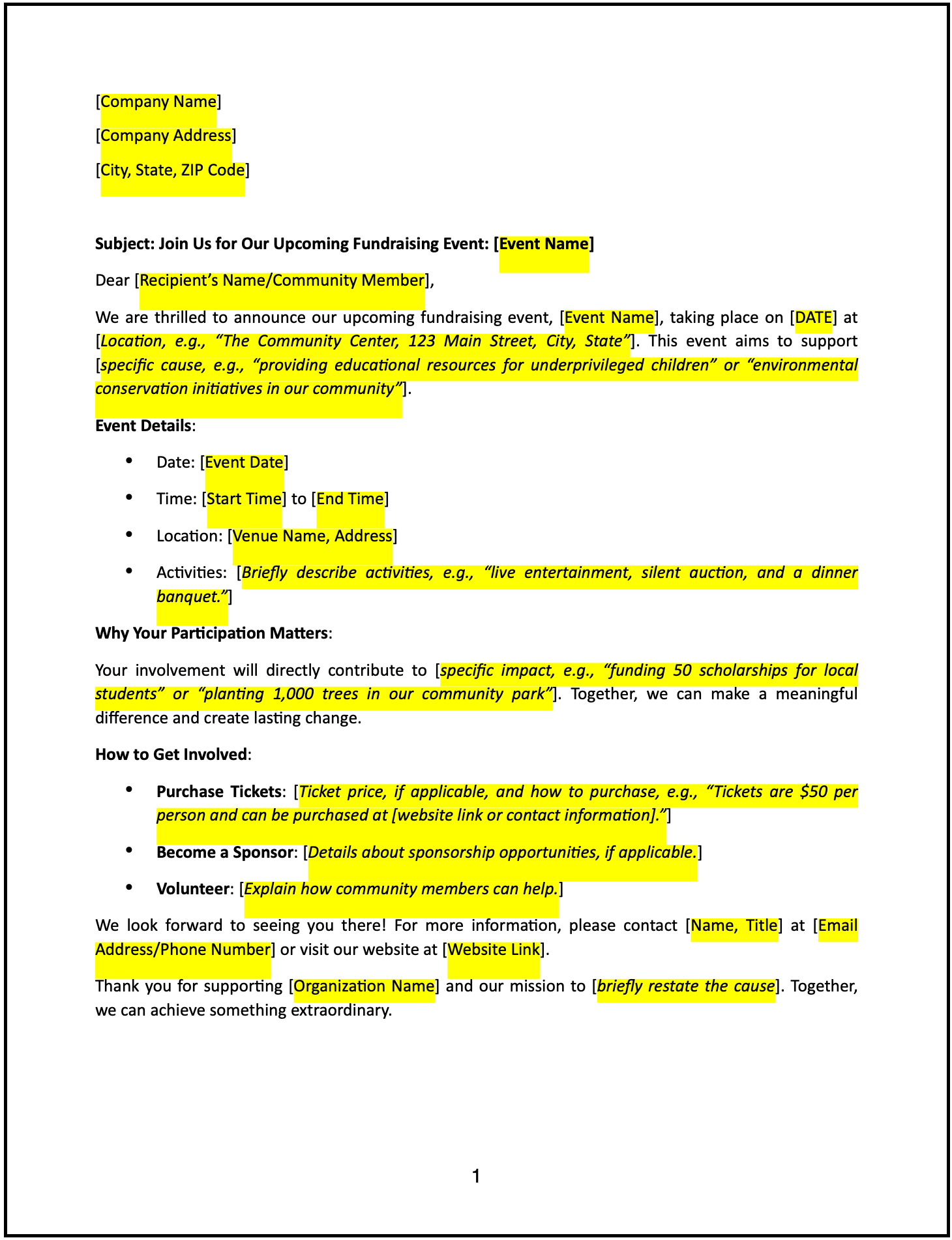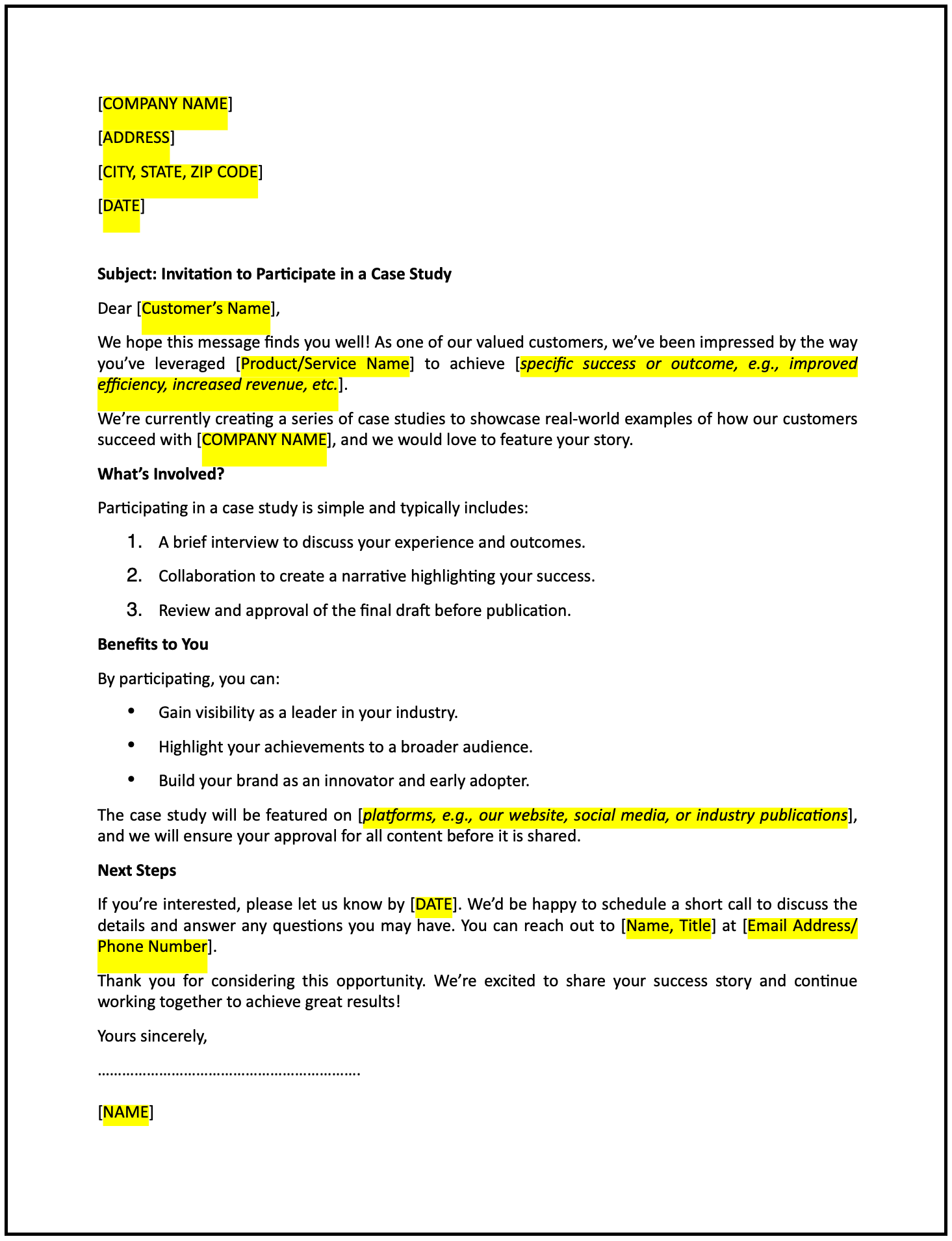Notification letter of winding down of the business: Free template

Notification letter of winding down of the business
A notification letter of winding down of the business is a formal communication used to inform stakeholders, including employees, customers, investors, and partners, about the decision to cease business operations. This letter outlines the reasons for the decision, the steps involved in the closure process, and any necessary actions required from stakeholders.
How to use this notification letter of winding down of the business
- Open with an introduction: Address the stakeholders respectfully and acknowledge their contributions to the company’s journey.
- Announce the decision: Clearly state that the business is being wound down, including the effective date of closure if applicable.
- Provide context: Briefly explain the reasons behind the decision, such as financial challenges, market conditions, or strategic considerations.
- Outline the closure process: Detail the steps being taken to wind down operations, such as fulfilling final obligations, settling accounts, or distributing remaining assets.
- Address stakeholder impact: Explain how the closure affects the recipient, including information about outstanding payments, services, or obligations.
- Reassure professionalism: Emphasize the company’s commitment to handling the process responsibly and transparently.
- Encourage communication: Invite stakeholders to reach out with questions, concerns, or support during the transition.
- Maintain a professional tone: Ensure the letter is clear, respectful, and focused on fostering understanding and trust.
- Provide contact information: Include details for the recipient to reach out with questions or discuss specific concerns.
Benefits of using a notification letter of winding down of the business
This letter ensures a structured and professional way to communicate a business closure while maintaining transparency and respect for stakeholders. Here’s how it helps:
- Promotes clarity: Clearly outlining the closure process prevents misunderstandings and speculation.
- Reflects professionalism: A well-crafted letter demonstrates respect and a commitment to responsible action.
- Encourages alignment: Openly addressing the closure fosters understanding and cooperation from stakeholders.
- Builds trust: Transparent communication during challenging times reinforces credibility and integrity.
- Supports transitions: Providing clear instructions helps stakeholders navigate their next steps effectively.
Tips for writing an effective notification letter of winding down of the business
- Be specific: Clearly describe the reasons for the closure, the timeline, and the steps being taken.
- Use professional language: Maintain a respectful and empathetic tone to foster understanding and goodwill.
- Provide context: Briefly explain the circumstances leading to the decision and its necessity.
- Highlight mutual respect: Acknowledge the contributions of stakeholders and express gratitude for their support.
- Include actionable steps: Share information about final payments, outstanding services, or next steps for stakeholders.
- Keep it concise: Focus on the essential points while ensuring the tone is professional and empathetic.
Frequently asked questions (FAQs)
Q: What details should I include in this letter?
A: Include the closure date, reasons for the decision, steps involved, and any stakeholder-specific actions required.
Q: Should I personalize the letter?
A: Yes, addressing stakeholders by name and referencing their relationship with the business demonstrates attentiveness and respect.
Q: Who typically sends this letter?
A: The business owner, CEO, or designated communication team typically sends this letter.
Q: How formal should this letter be?
A: The tone should be professional, respectful, and empathetic to foster trust and understanding.
Q: When should this letter be sent?
A: Send the letter promptly after finalizing the decision to wind down to ensure stakeholders are informed early.
Q: Can this letter include information about refunds or settlements?
A: Yes, addressing financial or contractual obligations ensures transparency and builds trust.
Q: Is acknowledgment from the recipient required?
A: While not mandatory, requesting acknowledgment ensures stakeholders are aware of and understand the announcement.
This article contains general legal information and does not contain legal advice. Cobrief is not a law firm or a substitute for an attorney or law firm. The law is complex and changes often. For legal advice, please ask a lawyer.


